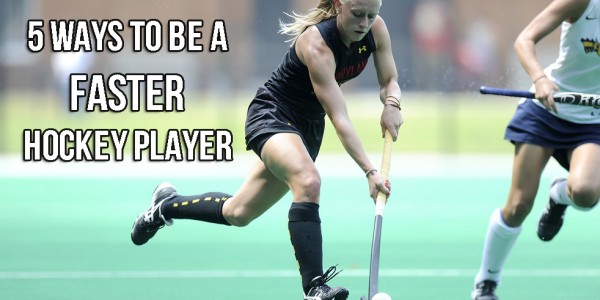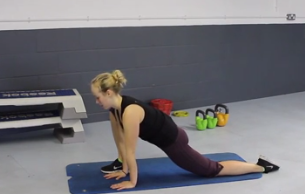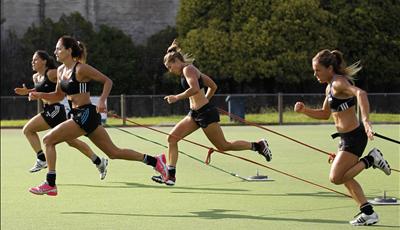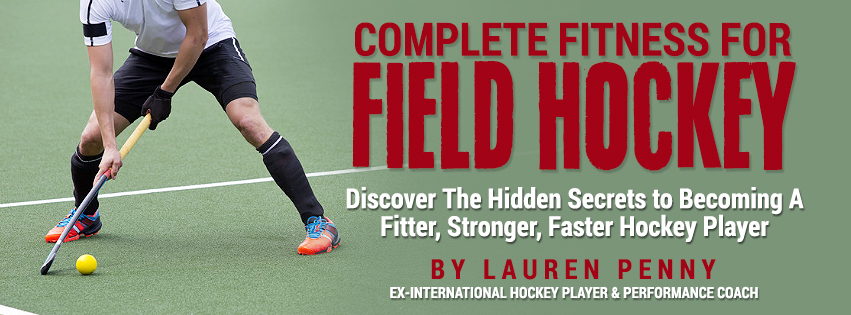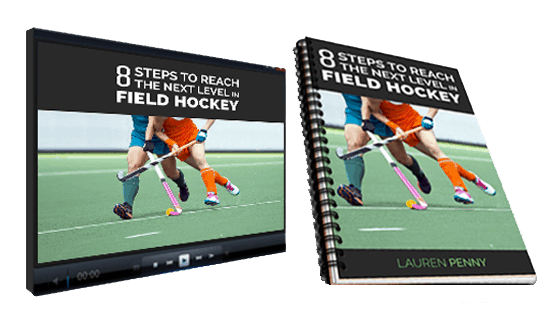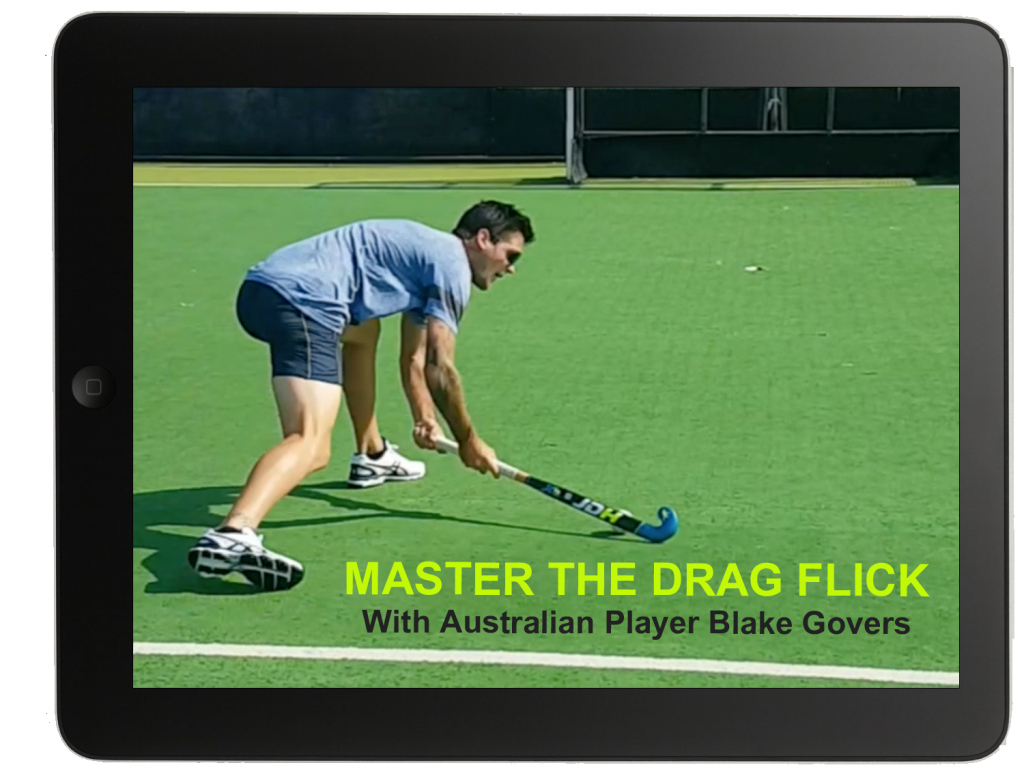Speed And Agility For Field Hockey
Nowadays improvements in speed and agility could make a huge difference on the hockey field whether you are a field player or a goalkeeper… The pace of the game has increased massively over the last few years and regardless of your skill, if you are not quick enough you could be left behind.
You may have heard people say “your speed depends on your genetics” – This is in fact not strictly true. Yes genetics do have a part to play but some of you may be pleased to hear that:
“Speed and agility can be taught”
Even if you are already pretty fast, then you could be even faster. The way we train speed and agility for hockey is important as it has become such a vital factor in the game not only in improving performance but also reducing the risk of injury.
If you want to become the athletic hockey player that:
- Always gets to the ball first
- Runs past players effortlessly
- Looks to pose a threat every time you get the ball
Then pay attention to the key considerations that I outline in this blog post.
Each of these points are topics on their own and are covered in much greater detail with an exact step-by-step blueprint included in some of our premium hockey programs. These are complete training systems available to hockey players worldwide who would like to develop their field hockey fitness and maximise their potential.
Here are the 5 things you MUST do to be a faster hockey player:
#1 – Improve your mobility
Mobility is the quality of moving freely or the ability to move your limbs and joints through a full range of movement. This is different from flexibility as unlike flexibility it is not isolated at each joint and it involves the central nervous system.
Most people have tight hips from sitting most of the day which results in bad posture. Hockey players tend to have even tighter hips which is caused from the position that we play hockey (bent over). We are often not even aware of our tight hips, but if we ignore them it can cause other injuries.
Having mobility in your hips is really important for hockey players as it enables you to get into more powerful athletic positions and explode into action at any point. It will also allow you to be able to turn and move in multiple directions with speed and fluidity.
Those who lack mobility in their hips could be fast while running in a straight line but may struggle to change direction efficiently, which is required a lot in hockey (particularly if your team tends to give the ball away a lot and you have to get back).
There is a range of different mobility exercises that you should be doing before you even warm up.
#2 – Get Stronger
Being strong is one of the most fundamental aspects of being a faster hockey player. In fact, I don’t do any sprint training with someone until I know they have a good base of strength. This is because without a good strength base you will likely overtrain the wrong muscles and get injured.
“You cannot maximise your speed unless you work on your foundational strength”
Strength is not about having big muscles, so ladies don’t worry you won’t turn into the incredible hulk. I can lift about twice my bodyweight and I don’t look anything like a bodybuilder and neither will you. Females simply do not have the levels of testosterone that men have to build muscle (unless you take steroids and gym for 6+ hours per day).
What I have found in my experience is that often players are doing the wrong kind of training and their program has no carry over onto the hockey field. For example exercises like bicep curls, tricep dips, leg extensions and ab exercises are not the most effective for hockey players. Those exercises target specific muscles instead of integrated movement patterns relative to hockey.
Everyone knows what a squat is, yet many STILL do it incorrectly. Although squats are a good exercise (when done correctly) just remember that one side will work harder than the other. This means that your weaker side won’t be improving and could create muscular imbalances which lead to injury, so make sure you also do some unilateral training too.

Lauren doing chin-ups (great strength exercise) in her home gym
Another mistake people make is using resistance machines at the gym like the leg press for example. In some cases this may be useful, especially when it’s part of a rehabilitation program and you are required to train specific muscles under a controlled environment.
However, in most cases you should not use resistance machines if you want to make improvements on the hockey field. When you sit on machines you take out the use of your core, which is so important in all sports.
Before you can get into any kind of speed specific training, I recommend you spend at least 8-12 weeks on a hockey specific strength training program which is going to help you make the most of your speed potential.
Remember: Technique is crucial… That is why we provide video training with demonstrations for a variety of different levels to ensure your technique is correct and that you are activating the right muscles.
Related post: 10 Reasons Every Hockey Player Needs To Be Doing Strength Training
#3 – Develop Power
Once you have developed a good base of strength, you need to convert that strength into power. Now, there are various ways to do this, but remember you need strength before you can have power.
Power would be lifting something relatively heavy very quickly and explosively.
On the field, some examples of power relates to:
- First step quickness
- Getting in front of your player to win the ball
- Bursting into space or sharp leading
- Speed at which you hit or pass the ball
- How far you throw an aerial
- The quickness of your dragflick
Power is the maximum effort you can generate over a short time (i.e. less than 6-10 seconds). If you want to improve your power but the exercise you choose takes 30 seconds to complete, then you are not actually improving your power.
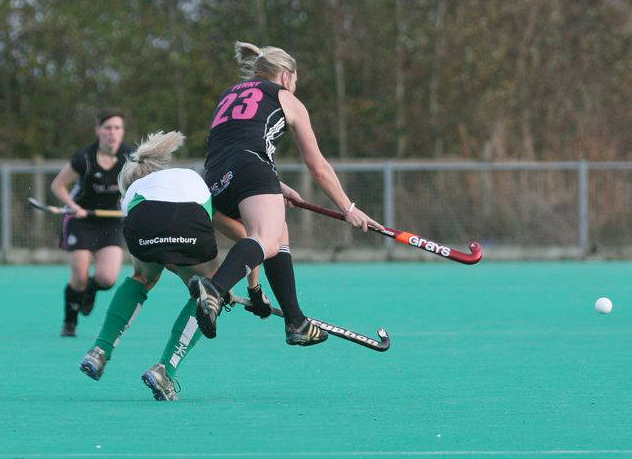
A demonstration of power on the field playing against Canterbury, UK
The importance of power is that it is done as fast as possible. Remember it is a combination of strength and speed.
There are various forms of power training, for example: plyometrics, olympic lifts and medicine ball training which all have different purposes and elements of improving your hockey. The key is to be explosive whilst also maintaining control.
Related post: 3 Power Exercises For Hockey Players
#4 – Sprint @ 100% then Recover!
To be a faster hockey player you must sprint (once you have a strong base)! I am not talking about going for runs or jogs, but I mean sprinting at 100% effort!
Most people hate the work sprint because “it’s tiring” and “takes a lot of effort” – but in actual fact sprinting shouldn’t make you tired. It’s when you don’t rest enough that it makes you tired.
It’s very important to understand that being faster is not just about sprinting and that you need the other points above first before you can maximise your speed. Equally you shouldn’t use advanced training methods before you have built up and mastered the basics.
The key point in sprinting to get faster is that you must take enough rest. If you don’t you won’t be able to run at 100%, therefore you won’t be sprinting or getting faster!
You also mustn’t train speed throughout the whole year as it is very demanding on your body, plus you need to allow time to build the foundation you need for speed, which comes from strength & power.
Most players and coaches turn sprint training into conditioning because they don’t allow enough rest. Any coach can make you tired but that’s not the point of speed & agility training. Very few hockey coaches understand the science behind training to improve your fitness versus your speed & agility.
#5 – Add Change of Direction
Maybe you are fast at running in straight lines, but what about when it comes to playing sport and you are required to change direction for most of the game (which is also more tiring that running in a straight line)?
Have you ever considered the various mechanics of how to change direction and turn?
Did you know that you can get an advantage over your player by improving your foot position and reaction time?
Do you ever practice deceleration from different positions?
These are some important questions which often aren’t even considered and something that most players & coaches aren’t even aware of. Once I learn’t the different techniques, I applied it to my hockey and wow, what a difference it made! The more you learn, the more you realise how much more there is to learn.

An example of change of direction in hockey
Players & coaches never get taught how to be faster and more agile. Maybe sometimes you do drills or ladder exercises but you are not improving because you just go through the motion and never get taught how to do it properly with the best efficiency.
Most coaches can’t explain how we should turn and change direction effectively, they just make you do hockey drills without realising that you can be more efficient with a few small technical changes.
All the points above have been fundamental for my own success, but also for others that have gone through our Hockey Specific Programs
A structured speed & agility hockey fitness program could make a huge difference to game and is an important aspect to consider as a modern day player.
 WANT MORE?
WANT MORE?
If you want to learn more about how to take your hockey to the next level, check out the FREE training including exclusive tips enjoyed this and want to learn more check out our free training below:
